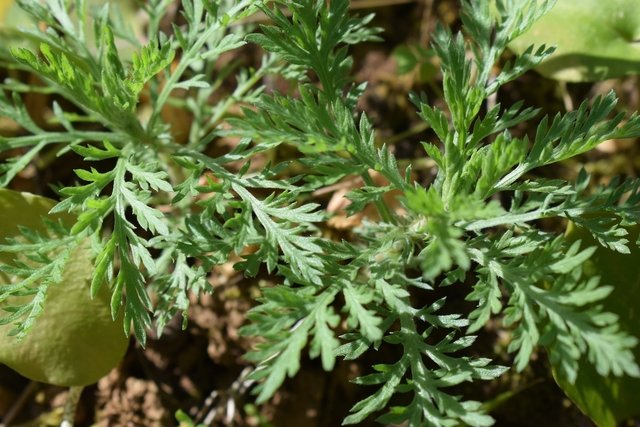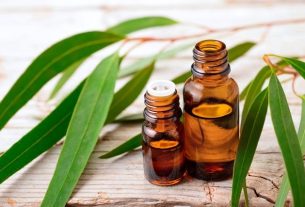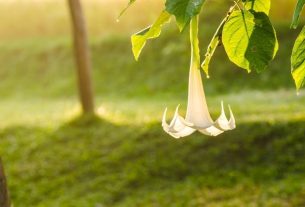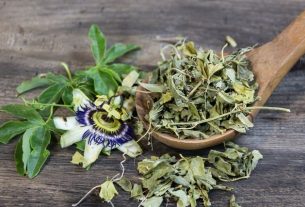Camphor is a medicinal plant rich in essential and aromatic oils, with antiseptic, decongestant, calming, anti-rheumatic and analgesic properties, and is therefore popularly used for bruises or rheumatism.
The normally used parts of this plant, which is also known as garden camphor, garden camphor, alcamphor or camphor, are the leaves for preparing infusions for inhalation, poultices or compresses for external use.
Camphor, of the species Artemisia Camphorata Villcan be found in health food stores, compounding pharmacies and in some street markets and markets, and should be used under the guidance of a doctor or herbalist, as it is a toxic plant that should not be ingested or used by children , pregnant or lactating women.

What is it for
Camphor is popularly indicated to help in the treatment of:
- Muscle pain;
- Bruises;
- Dislocations;
- Arthrosis;
- Rheumatism;
- Insect bites;
- Breathing problems;
- Heart problems;
- Neurological problems.
Although it has many benefits, this medicinal plant should not replace medical treatment or be used without guidance from a doctor or healthcare professional with experience in the use of medicinal plants.
How to use
The normally used parts of camphor are the leaves to prepare infusions for inhalation, poultices, aromatherapy, creams, ointments or camphorated alcohol.
1. Camphor infusion
Camphor infusion can be used to inhale and alleviate respiratory problems, such as bronchitis, cough or nasal congestion, as well as neurological problems, as it helps to calm.
Ingredients
- 3 to 5 drops of camphor essential oil or 1 handful of fresh camphor leaves;
- 1 liter of boiling water.
Preparation mode
Add drops of camphor essential oil to boiling water. Then, cover your head with an open towel, so that it also covers the container containing the camphor essential oil solution. Tilt your head over the container and inhale the steam as deeply as possible for up to 10 minutes, repeating 2 to 3 times a day. This towel helps keep the solution vapor for longer.
When you finish inhaling, it is important to wipe your face with a towel soaked in cold water.
2. Camphor poultice
Camphor poultice can be used for bruises, muscle pain, rheumatism or osteoarthritis, for example.
Ingredients
- 4 camphor leaves;
- 1 cup of water.
Preparation mode
Boil the water and add it to a container containing the camphor leaves. Let it rest for 10 minutes. Then strain, wait for it to cool and dip gauze, cotton or cloth in this mixture. Apply to the skin in the affected region, massaging gently, up to 3 times a day.
3. Camphor aromatherapy
Aromatherapy is a technique that uses the aroma and particles released by essential oils to stimulate different parts of the brain. In the case of camphor essential oil, aromatherapy can help alleviate symptoms of anxiety, emotional tension or stress, as it has calming and sedative properties.
To perform aromatherapy with camphor, you must place 2 to 3 drops of the essential oil on a cotton ball, and inhale the aroma deeply, holding the air in your lungs for about 2 to 3 seconds, before exhaling. Repeat inhalation 3 to 7 times, several times a day.
Another way to perform aromatherapy with eucalyptus essential oil is to place 2 to 3 drops of camphor essential oil in a little water, inside an electric air freshener or in a room diffuser. The amount of water used varies according to the capacity of the electric air freshener or diffuser. The cloud of smoke or vapor formed allows the aroma to be released throughout the room.
4. Camphor cream
Camphor cream or ointment can be prepared to help relieve symptoms of respiratory problems, such as nasal congestion, or to relieve muscle or joint pain.
Ingredients
- 10 drops of camphor essential oil;
- 30 mL of almond oil or coconut oil.
Preparation mode
Mix the ingredients in a clean, dry container. Then, apply to the skin of the chest, or to the affected muscle or joint, massaging gently, once a day.
Before using camphor essential oil to prepare the cream, an allergy test must be carried out, preparing a mixture containing 1 drop of camphor essential oil in 1 teaspoon of coconut or almond oil, and applying on the back of the hand or in the crook of the elbow. Wait 24 hours and, if during this period the skin becomes red or irritated, it is not recommended to use camphor essential oil.
5. Camphorated alcohol
Camphorated alcohol can be used on the skin to relieve muscle pain, rheumatism, bruises or bumps.
Ingredients
- 4 fresh camphor leaves;
- 500 mL of grain alcohol or 96ºGL ethyl alcohol.
Preparation mode
In a clean and dry glass container, add the washed camphor leaves and crush the leaves in a little alcohol. Then, place this mixture in a clean and dry glass bottle, add 500 mL of alcohol and cover. Cover the jar with aluminum foil and let it rest for a week. This alcohol can be used to gently massage the skin in the affected area.
Another option for making camphor alcohol is to use 3 crushed camphor stones, adding them to the clean and dry glass container containing the alcohol. Shake and use when the stones are completely dissolved.
Possible side effects
Camphor is considered toxic when used in excess or in quantities greater than those recommended, and can cause side effects such as nausea, vomiting, stomach pain, or even seizures.
Furthermore, camphor essential oil used on the skin can cause irritation or a burning sensation on the skin, so it should always be tested on a small area of the skin beforehand.
Therefore, the use of camphor should only be done with medical advice or from a healthcare professional with experience in medicinal plants.
Who shouldn’t use
Camphor should not be used by children, pregnant or breastfeeding women.
Furthermore, camphor should not be ingested orally, and should only be used on the skin or in the form of inhalation or aromatherapy.
Camphor should also not be applied to skin with open wounds or infection, or to mucous membranes, such as the eyes, inside the nose or genital region.
Camphorated alcohol should also not be used by people taking disulfiram.

Sign up for our newsletter and stay up to date with exclusive news
that can transform your routine!
Warning: Undefined array key "title" in /home/storelat/public_html/wp-content/plugins/link-whisper-premium/templates/frontend/related-posts.php on line 12
Warning: Undefined array key "title_tag" in /home/storelat/public_html/wp-content/plugins/link-whisper-premium/templates/frontend/related-posts.php on line 13



